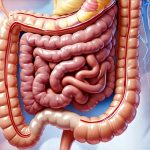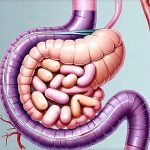Anxiety and sleep disturbances are incredibly common in modern life, impacting millions worldwide. Often treated as primarily psychological issues, there’s growing recognition that these conditions are deeply intertwined with our physical health, particularly the health of our gut. The intricate connection between the brain and gut – often referred to as the gut-brain axis – is a bidirectional communication network constantly exchanging signals. Disruptions in this system can manifest as mood disorders, sleep problems, and a host of other physiological issues. Increasingly, research points to the role of histamine, a molecule involved in immune response, allergic reactions, and neurotransmission, as a key player in these disturbances, and surprisingly, gut flora may be central to how much histamine our bodies produce and tolerate.
The conventional understanding of anxiety and sleep often focuses on neurotransmitters like serotonin and dopamine, but histamine’s influence is frequently overlooked. Histamine isn’t just about allergies; it directly impacts brain function, influencing arousal, wakefulness, and even cognitive processes. For some individuals, an overabundance or impaired metabolism of histamine can contribute significantly to anxiety symptoms – a racing heart, restlessness, difficulty concentrating – and disrupt sleep architecture, leading to insomnia or restless nights. While pharmaceutical interventions targeting serotonin or GABA are common approaches, understanding the gut biome diversity offers potentially novel avenues for support and management, particularly focusing on strategies that modulate gut health.
The Gut Microbiota & Histamine Production
The relationship between our gut flora and histamine is complex and multifaceted. It’s not simply a matter of “bad bacteria” producing histamine; many factors influence the overall balance. Certain bacterial species within the gut actively produce histamine, or possess enzymes like histidine decarboxylase (HDC) which facilitate its production from the amino acid histidine. These include strains commonly found in the gut microbiome, such as certain Bacillus, Escherichia, and Lactobacillus species. However, a healthy gut also contains bacteria that can degrade histamine, essentially breaking it down before it causes issues. This balance between production and degradation is crucial for maintaining histamine homeostasis.
Dysbiosis – an imbalance in the gut microbiome – can tilt this delicate equilibrium towards increased histamine levels. Factors contributing to dysbiosis are numerous: poor diet (high in processed foods, sugar, and inflammatory fats), chronic stress, antibiotic use, and even environmental toxins. When beneficial bacteria are reduced, or overwhelmed by opportunistic species, histamine-producing bacteria may proliferate, leading to an overabundance of the molecule. Simultaneously, a compromised gut lining – often termed “leaky gut” – increases permeability, allowing more unmediated histamine to enter the bloodstream. This systemic increase can trigger a cascade of physiological responses, contributing to anxiety and sleep disruption.
Furthermore, the gut microbiome influences mast cell activation. Mast cells are immune cells that release histamine in response to various stimuli. A dysbiotic gut can lead to increased mast cell activation, even without an allergic trigger, resulting in chronic low-grade inflammation and elevated histamine levels. This creates a vicious cycle where histamine contributes to further gut dysfunction, exacerbating the problem. Therefore, focusing on cultivating a diverse and balanced gut microbiome isn’t just about digestion; it’s about regulating histamine production, mast cell stability, and overall physiological wellbeing. Understanding this connection can also help with issues like gut inflammation that contribute to digestive distress.
Histamine Intolerance & Associated Symptoms
Histamine intolerance (HIT) is a condition where the body struggles to break down histamine effectively, leading to a buildup of the molecule and associated symptoms. While often confused with histamine allergy, HIT isn’t an allergic reaction; it’s a metabolic issue. The key enzyme responsible for breaking down ingested histamine is diamine oxidase (DAO). Several factors can reduce DAO activity, including gut dysbiosis, small intestinal bacterial overgrowth (SIBO), genetic predispositions, and even certain medications.
When DAO levels are insufficient, even normal amounts of dietary histamine – found in fermented foods, aged cheeses, smoked fish, and wine – can overwhelm the system, triggering a wide range of symptoms. These symptoms can mimic anxiety disorders, including: – Palpitations and racing heart – Flushing and skin rashes – Headaches and migraines – Digestive issues (bloating, diarrhea) – Insomnia and sleep disturbances – Brain fog and difficulty concentrating – Panic attacks and feelings of dread.
The overlap between HIT symptoms and anxiety/sleep disturbance can make diagnosis challenging. Many individuals with HIT are misdiagnosed with psychological conditions, leading to ineffective treatment approaches. It’s important to note that HIT is often a secondary condition – meaning it arises from underlying gut issues or other health problems. Addressing the root cause of histamine intolerance, rather than just managing symptoms, is crucial for long-term relief. This can sometimes be linked to cold symptoms and digestive issues as well.
Dietary & Lifestyle Approaches to Histamine Management
Managing histamine levels isn’t about completely eliminating histamine; that’s often impractical and can be restrictive. It’s about reducing the overall histamine burden on the body and supporting natural detoxification pathways. Dietary modifications play a significant role, focusing on a low-histamine diet for a period to assess tolerance and identify trigger foods. This involves minimizing high-histamine foods mentioned earlier (fermented products, aged cheeses, etc.) and opting for fresh, whole foods.
Beyond diet, lifestyle adjustments are equally important. Chronic stress significantly increases histamine release, so incorporating stress management techniques like mindfulness, meditation, yoga, or deep breathing exercises can be beneficial. Supporting gut health through probiotic-rich foods (kefir, yogurt – if tolerated) and prebiotic fibers (found in onions, garlic, asparagus) can help restore microbial balance. Addressing underlying gut issues like SIBO is also critical. Understanding the gut microbiota is key to overall wellbeing.
Supplementation & Further Investigation
Supplementation with DAO enzymes can temporarily assist in histamine breakdown, providing relief for individuals experiencing HIT symptoms. However, it’s not a long-term solution and should be used alongside other strategies to address the root cause. Other potentially helpful supplements include: – Vitamin C: Supports DAO enzyme activity. – Quercetin: A natural antihistamine that stabilizes mast cells. – Magnesium: Can help reduce stress and improve sleep quality.
It’s important to consult with a healthcare professional before starting any new supplementation regimen, as interactions with medications or existing health conditions are possible. Furthermore, comprehensive testing can provide valuable insights into histamine levels, DAO activity, gut microbiome composition, and mast cell activation. This allows for a personalized approach to management that addresses the specific underlying factors contributing to histamine-induced anxiety and sleep disturbance. Testing may include stool analysis, blood tests (histamine, DAO), and potentially SIBO breath testing. Ultimately, understanding the interconnectedness of the gut, histamine, and brain is crucial for developing effective strategies to support mental wellbeing and restful sleep. This approach can be especially beneficial when considering the relationship between gut biome diversity and overall health.


















